RBSE Solutions for Class 7 Maths Chapter 14 Symmetry Ex 14.3
Rajasthan Board RBSE Solutions for Class 7 Maths Chapter 14 Symmetry Ex 14.3 Textbook Exercise Questions and Answers.
RBSE Class 7 Maths Solutions Chapter 14 Symmetry Ex 14.3
Question 1.
Name any two figures that have both lines symmetry and rotational symmetry.
Answer:
An equilateral triangle and circle have both lines symmetry and rotational symmetry.
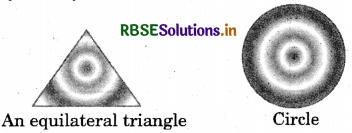

Question 2.
Draw, wherever possible, a rough sketch of:
(i) A triangle with both lines and rotational symmetries of order more than 1.
(ii) A triangle with only line symmetry and no rotational symmetry of order more than 1.
(iii) A quadrilateral with a rotational symmetry of order more than 1 but not a line symmetry.
(iv) A quadrilatral with line symmetry but not a rotational symmetry of order more than 1.
Answer:
(i) An equilateral triangle has 3 lines of symmetry and has rotational symmetry of order 3.
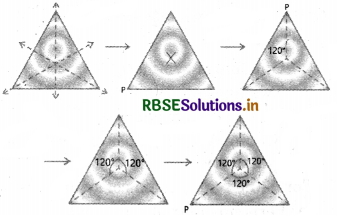
(ii) An isosceles triangle has one line of symmetry and no rotational symmetry of order more than 1.
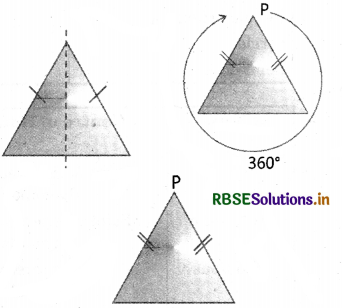
(iii) A parallelogram has no line of symmetry but has a rotational symmetry of order 2.

(iv) An isosceles trapezium has one line of symmetry but no rotational symmetry of order more than 1.


Question 3.
If a figure has two or more lines of symmetry, should it have rotational symmetry of order more than 1?
Answer:
Yes.
Question 4.
Fill in the blanks:
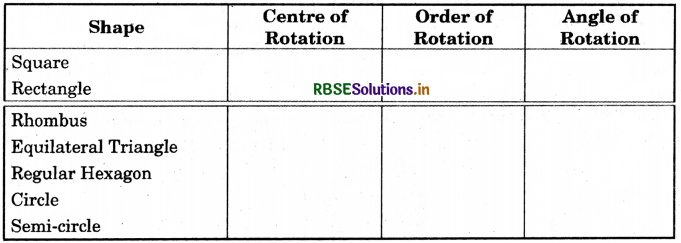
Answer:
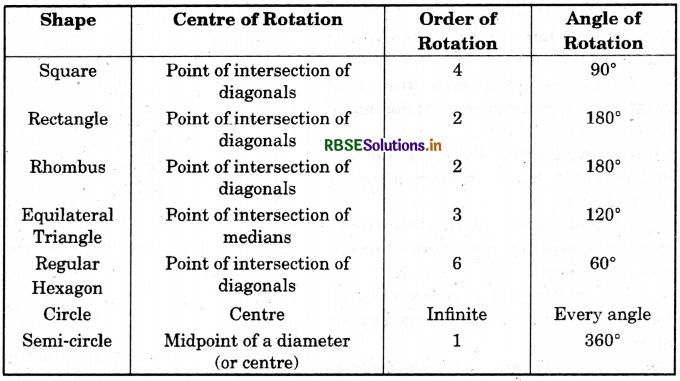
Question 5.
Name the quadrilaterals which have both line and rotational symmetry of order more than 1.
Answer:
Square and rectangle have both line and rotational symmetry of order more than 1.
Question 6.
After rotating by 60° about a centre, a figure looks exactly the same as its original positin. At what other angles will this happen for the figure?
Answer:
Other angles will be 120°, 180°, 240°, 300° and 360°.

Question 7.
Can we have a rotational symmetry of order more than 1 whose angle of rotation is:
(i) 45°?
(ii) 17°?
Answer:
(i) Yes.
(ii) No.
